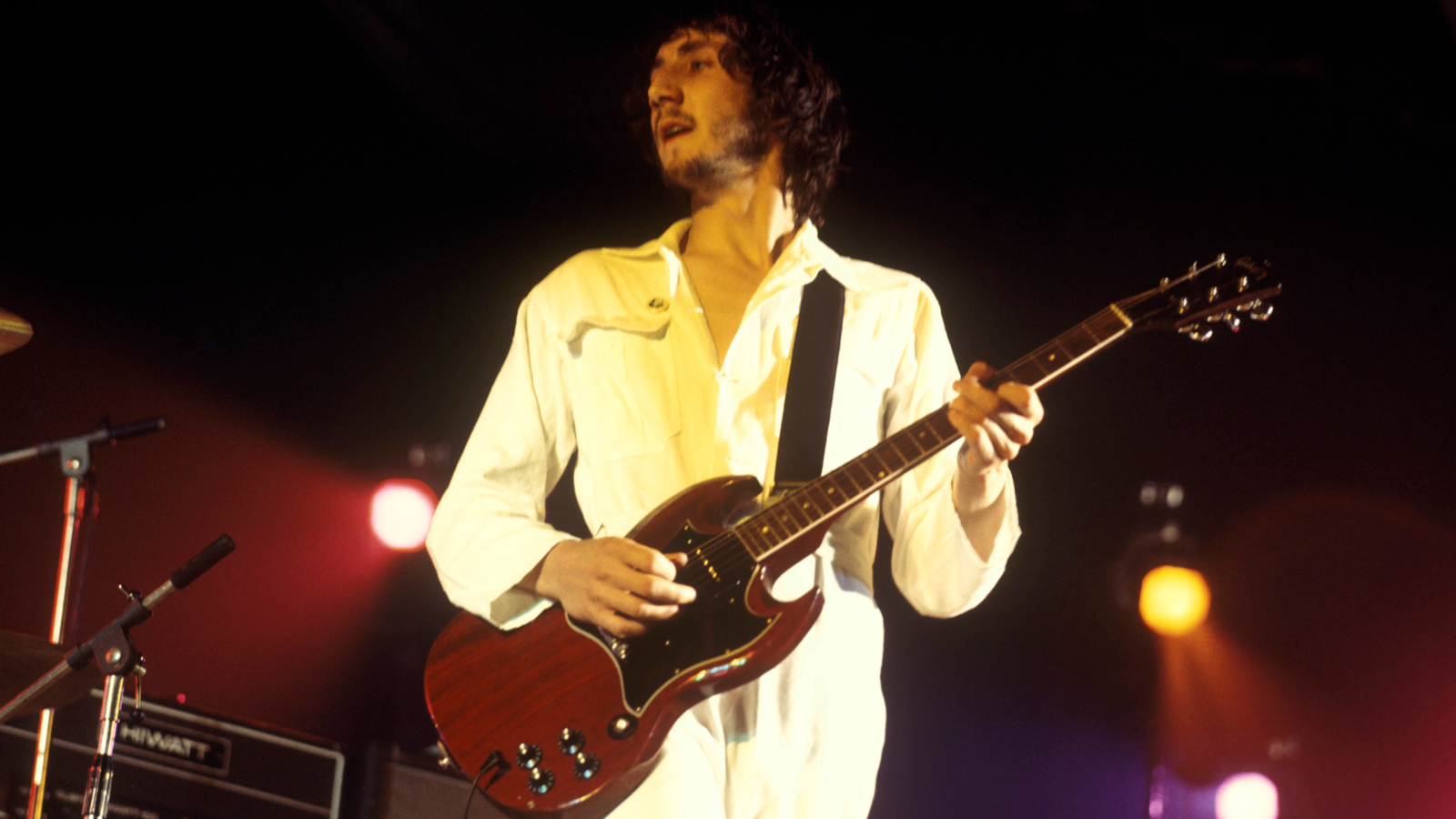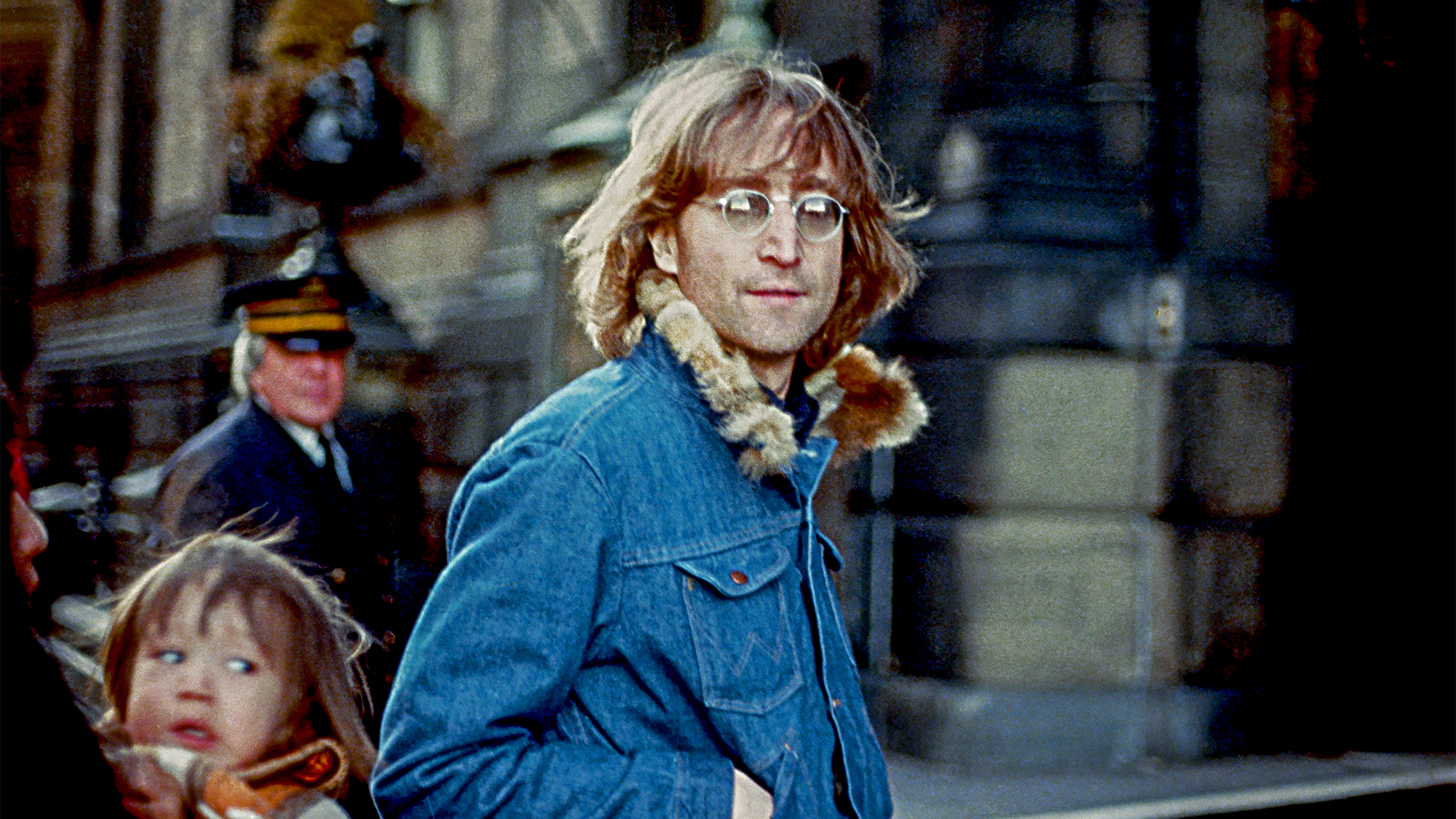Favored by Angus Young, Pete Townshend and Sister Rosetta Tharpe, Here’s How the Gibson SG Came to Be
This classic electric guitar design has come to hold a unique place, both tonally and visually, in rock and roll history

Imagine it’s 1960 and you’re working for Gibson in Kalamazoo, Michigan. You’re sitting at a table with other employees looking at what will one day become the Holy Grail of electric guitars: the sunburst Les Paul Standard from the period 1958 to 1960.
It has Honduran mahogany, big-leaf maple, Brazilian rosewood and PAF humbucking pickups. It is timeless and achingly beautiful.
But the financial picture for this guitar isn’t pretty.
The company revived the Les Paul with humbucking pickups in 1957, and again in ’58 with the sunburst finish. Sales peaked in 1959, but you’ve shipped fewer than 1,800 ’Bursts in all. Your biggest-selling guitars are the lower-priced slab-bodied Les Paul Junior and Melody Maker. What’s more, you’re doubling the size of your factory and need to get it working to capacity.
This is when your boss, Ted McCarty, makes a decision that ultimately ensures the original ’Burst will become a holy grail. Equally important, it creates yet another legendary Gibson solidbody.
The SG’s Origins

As Gibson’s president from 1950 to 1966, McCarty was ultimately responsible for the most important electric guitar designs in the company’s history.
The SG’s development was part of a wider restructuring of the electric guitar line through the late 1950s and early ’60s. In hindsight, the decision to radically morph the Les Paul Standard into what we now know as the SG may look like madness. At the time, however, and in the context of what was happening in the market, it was the obvious move.
All the latest guitar news, interviews, lessons, reviews, deals and more, direct to your inbox!
The shape was resculpted to a more aggressive, modernist outline, offering twin cutaways and unrestricted access to the very last of its 22 frets
Gibson’s legacy of expertly crafted archtop instruments was enjoying new electric life via the hollow-body ES-175 and revolutionary ES-335 thinline semi-hollow of 1958. Meanwhile, the trend for more modern-minded, feedback-busting solidbody electrics for younger rock and roll players received a shot in the arm that year with the Flying V and Explorer. Both guitars were well ahead of their time, however, and sold poorly as a result.
Less radical, but just as important, in 1958 came Gibson’s first double-cutaway solidbody, the Les Paul Junior, which would prove pivotal to the SG’s genesis. For 1961, McCarty took the single-cutaway Les Paul Standard’s 60mm thick body and slimmed it considerably, did away with the carved maple top and left a simple slab mahogany body already popularized by the Junior and Melody Maker.
The shape was resculpted to a more aggressive, modernist outline, offering twin cutaways and unrestricted access to the very last of its 22 frets.

With the chunk of wood gone between the 16th and 21st/22nd frets on the bass side, the neck would also prove more unstable and very easy to bend in and out of tune, resulting in the SG’s most notable and – depending on your style – most loved or loathed idiosyncrasy. Indeed, the neck was slimmer than on the 1960 Les Paul model.
Retained from the previous models were most of the hardware and electronics complement. The first models shipped with the distinctly odd, sideways-action Gibson Deluxe Vibrato, and the overall effect on tone was a brighter, harder-edged sound, with less apparent low-end response.
It was certainly different, and it proved – as if more proof were necessary – that McCarty was moving forward fearlessly.
Losing Les
Les Paul, by all accounts, wasn’t enamored of his new signature guitar. As Tony Bacon explains in his book 50 Years of the Gibson Les Paul, and as Walter Carter notes in The Gibson Electric Guitar Book, the superstar’s contract with Gibson was up for renewal in 1962 or 1963, depending on who’s telling the story.
The new guitar became the SG – for Solid Guitar
Due to Les’s waning popularity in the charts, impending divorce from Mary Ford and general dissatisfaction with the new design, his contract wasn’t renewed. He wasn’t officially associated with the company again until 1968, when Gibson reintroduced the original Les Paul shape, having realized that a handful of world-changing players were lusting after those old ’Bursts, as played at the time by blues guitarists like Eric Clapton, Michael Bloomfield and Peter Green.
The new guitar, meanwhile, became the SG – for Solid Guitar – and so it would remain.
Over the years, the SG has been subjected to numerous revisions, changes and tweaks. Like Fender’s celebrated Stratocaster and Telecaster and, indeed, Gibson’s own Les Paul model, the SG has survived mid-’60s stylistic tinkering, a 1970s corporate meltdown and the metal-driven excesses of the 1980s.
What prevails in the hearts of most guitar enthusiasts are those classic specs from the ’61-’63 period: the cherry-finished Standard, Juniors and Specials, and the white three-pickup Custom that will forever be associated with Jimi Hendrix.
A Happy Mistake
60 years later, who could have guessed that evolving the super-plush single-cut Les Paul Standard into a stripped-down, twin-horn rocker would net the most desirable electric guitar in history for Gibson, right alongside its rebellious, outlandish sibling?
Exciting, visceral and thoroughly modern, players who saw it couldn’t help but be seduced by its sharp lines and unbridled playing potential. In the hands of guitarists like Angus Young, Pete Townshend, Tony Iommi, Frank Zappa, Sister Rosetta Tharpe and Robby Krieger, the SG has come to hold a unique place, both tonally and visually, in rock and roll history.
Long live the Solid Guitar. May it never grow up.

